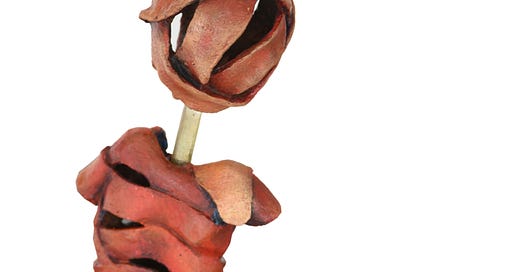Inside the African Exhibition Hustle: Who Pays for the Art?

African art is gaining global attention, with exhibitions showcasing the continent's rich cultural heritage.
However, behind the scenes, curators face significant challenges in funding and sustaining these exhibitions. Limited financial resources, infrastructural deficiencies, and the need for sustainable practices are constant concerns.
Despite these challenges, there is a growing recognition of the importance of African art on the global stage. Institutions and individuals are stepping up to support curators and artists, fostering an environment where African exhibitions can thrive.
In this digest, we will explore the intricacies of funding and sustaining African art exhibitions, highlighting the efforts of curators and the support systems that enable their success.
Top Picks from Our Collection



Funding: The Lifeblood of Exhibitions
Securing funding is a perennial challenge for African art exhibitions. Many curators rely on a mix of personal investments, grants, and sponsorships to bring their visions to fruition. Organisations like the African Culture Fund (ACF) provide crucial support, offering grants to artists and cultural projects across the continent. Similarly, the African Arts Trust focuses on supporting emerging artists, providing them with the resources needed to develop and showcase their work.
However, accessing these funds is not always straightforward. The application processes can be competitive and complex, often requiring extensive documentation and proposals. Moreover, the availability of funds is limited, and not all deserving projects receive the support they need.
To mitigate these challenges, some curators turn to alternative funding methods. Crowdfunding platforms, partnerships with local businesses, and collaborations with international institutions have become viable options. These approaches not only provide financial support but also help in building networks and increasing the visibility of African art.
Sustainability: Beyond the Exhibition
Sustainability is a critical aspect of curating African art exhibitions. Beyond securing initial funding, curators must ensure that exhibitions have a lasting impact. This involves strategic planning, community engagement, and the integration of sustainable practices.
One notable example is the Congolese Plantation Workers Art League (CATPC) in the Democratic Republic of the Congo. This collective of artists creates sculptures from materials like cacao and palm oil, common products derived from plantations.
The income generated from exhibitions and sales of their artworks is used to buy back and restore their land using the principles of agroforestry. This approach not only ensures relevance but also encourages local support and participation.
International Collaboration: A Global Stage
International collaborations have proven instrumental in supporting African art exhibitions. Partnerships with global institutions bring in not only funding but also expertise, exposure, and access to broader audiences.
For instance, the Outset Contemporary Art Fund has awarded significant grants to African art initiatives, including a £150,000 grant to the African Artists’ Foundation for their travelling exhibition "Dig Where You Stand."
Such collaborations also facilitate knowledge exchange, allowing African curators to learn from global best practices while sharing their unique perspectives. This mutual enrichment enhances the quality and impact of exhibitions, fostering a more inclusive and diverse global art scene.
The business of curating African art exhibitions is a complex yet rewarding endeavour. While funding and sustainability pose significant challenges, the resilience and creativity of curators, coupled with support from organisations and international partners, are driving the growth and success of African art on the global stage. By embracing innovation, fostering community engagement, and building strategic collaborations, curators are not only preserving Africa's rich artistic heritage but also shaping its vibrant future.



